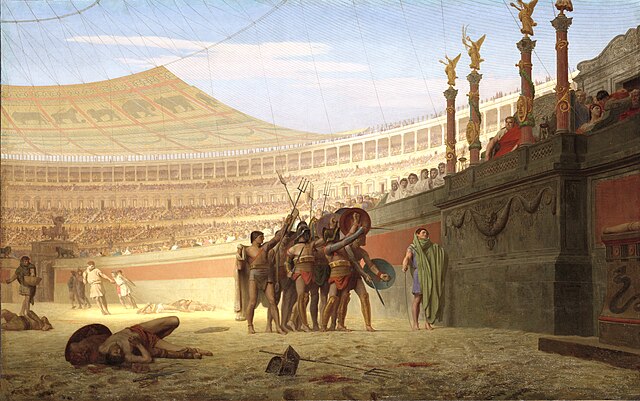Top Qs
Timeline
Chat
Perspective
Velarium
Suspended roof or shade awning of ancient Rome From Wikipedia, the free encyclopedia
Remove ads
A velarium ("curtain")[3] was a type of awning used in Roman times. It stretched over the whole of the cavea, the seating area in amphitheaters, to protect spectators from the sun.[4][2] Retractable awnings were relatively common throughout the Roman Empire. Though the precise details are unclear, the awning was evidently usually supported by wooden masts, the sockets and brackets for which remain on the Colosseum and Arena of Nîmes, for example.[5][6][2]



Remove ads
The Colosseum
The Colosseum being the biggest amphitheater of Roman times, the velarium that covered it was the biggest that ever was as well. It provided shade from the sun for up to one third of the arena. The velarium also created a ventilation updraft, creating circulation and a cool breeze.[2]
It is believed that sailors from the Misenum fleet, with their background in sailmaking and rigging were employed to build, maintain and operate the velarium.
Remove ads
In modern times
The Puy du Fou theme park, in France, has a Roman-style amphitheatre built for some of its shows, complete with an antique-style velarium.


References
Wikiwand - on
Seamless Wikipedia browsing. On steroids.
Remove ads
